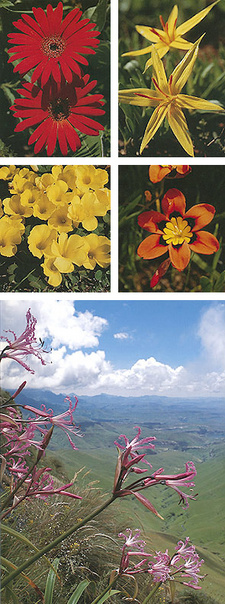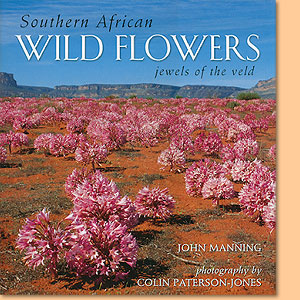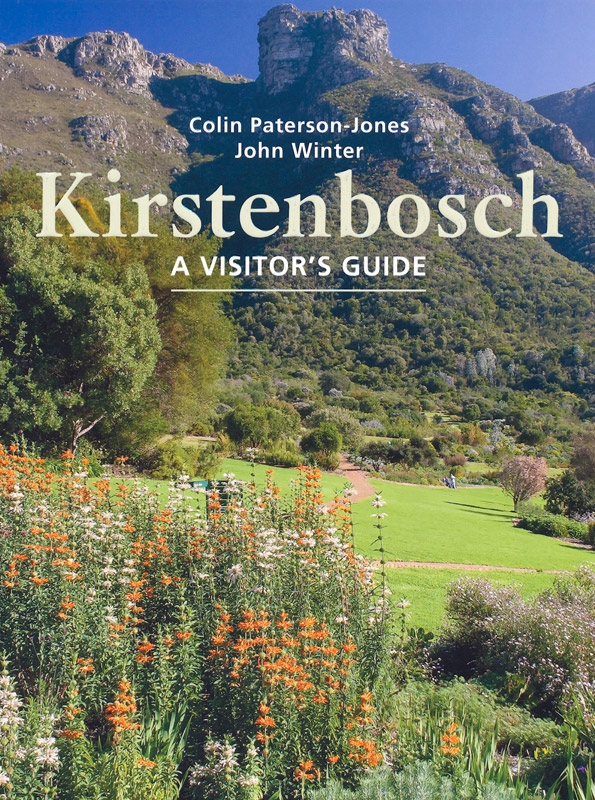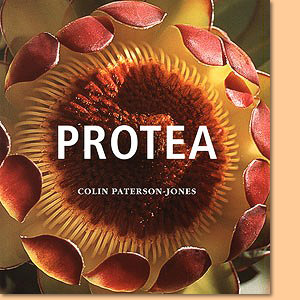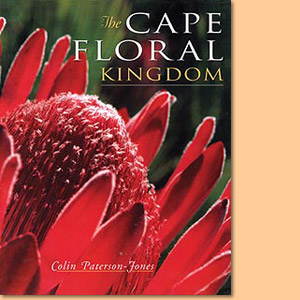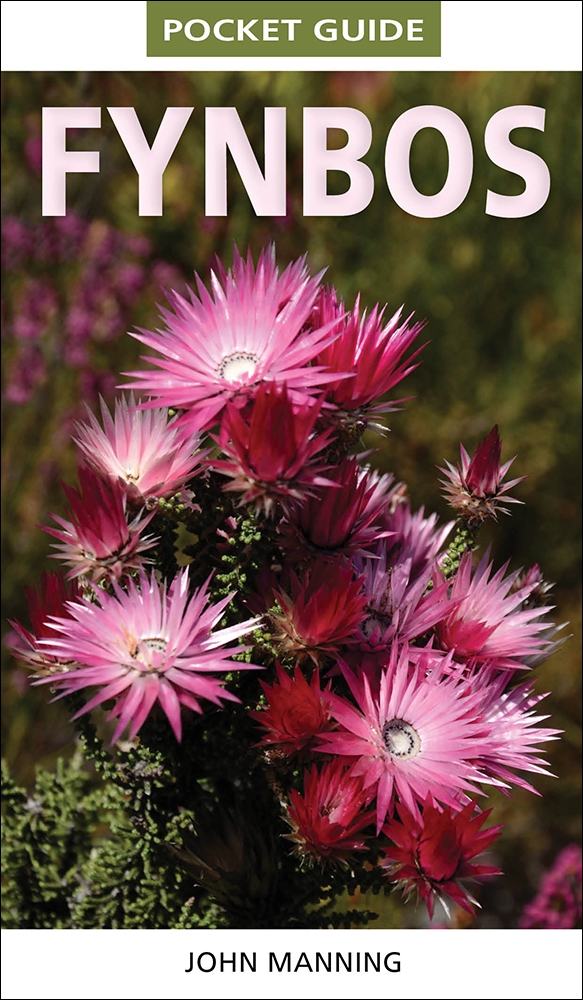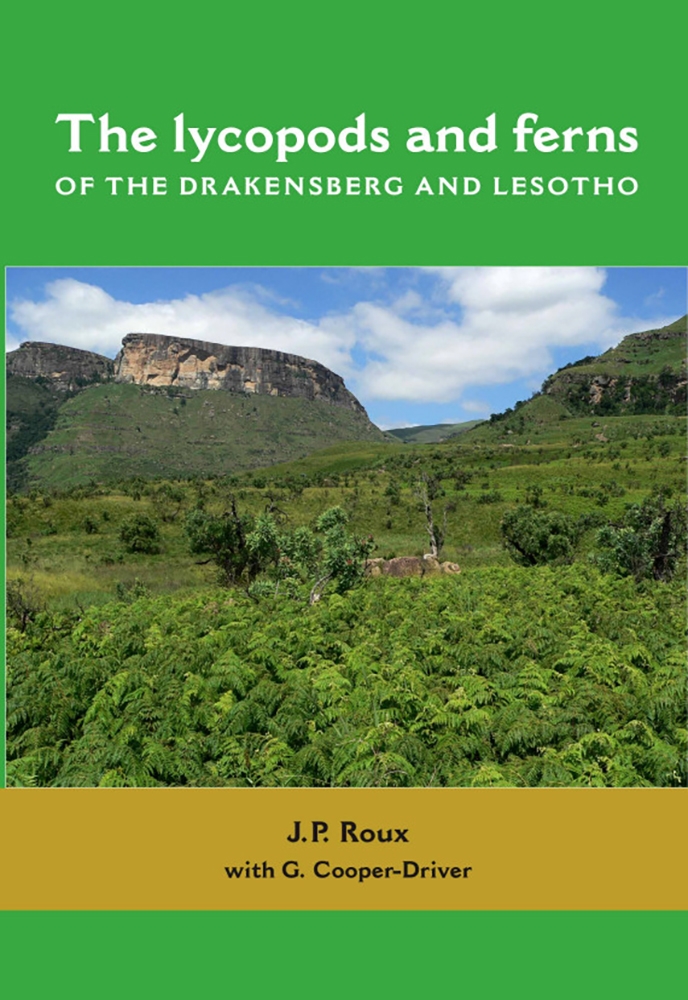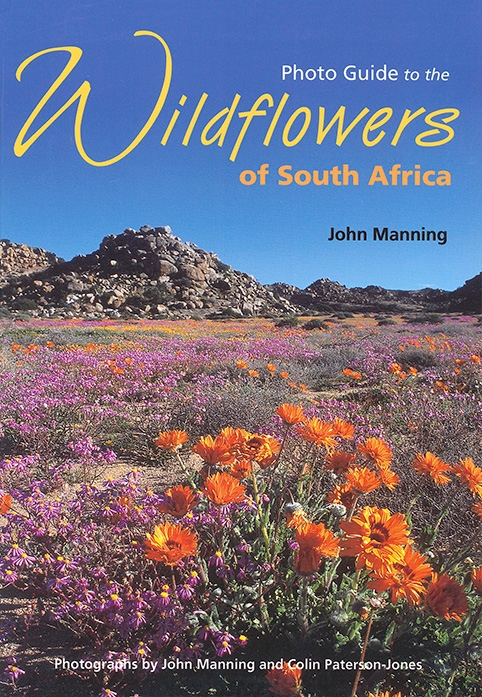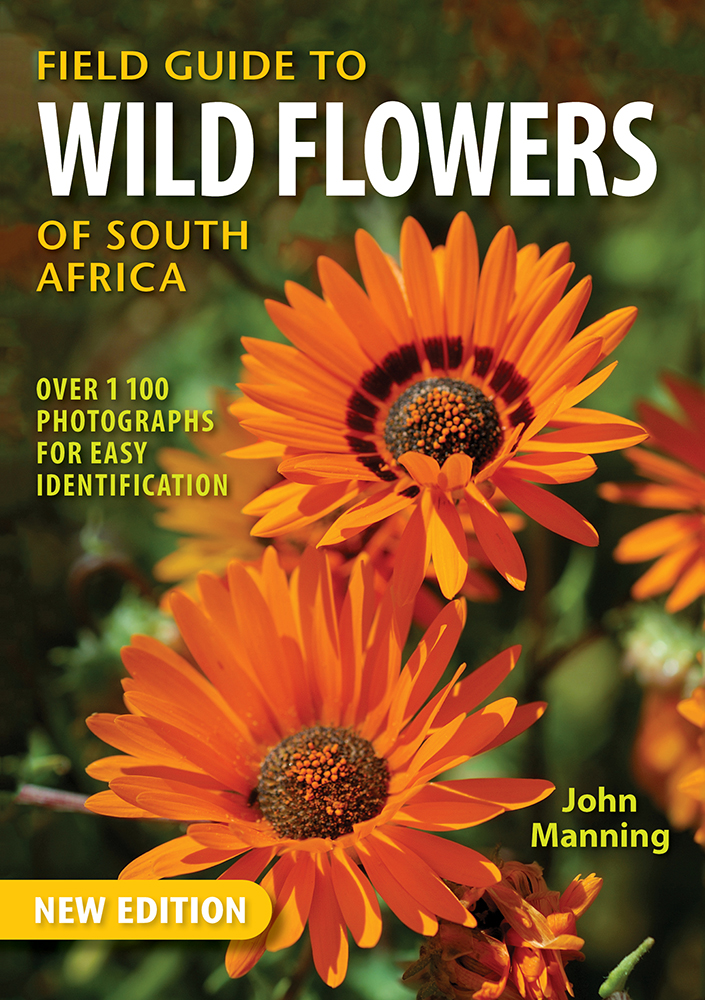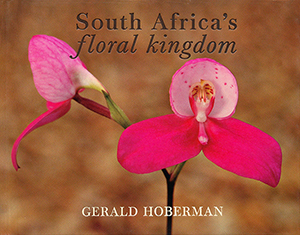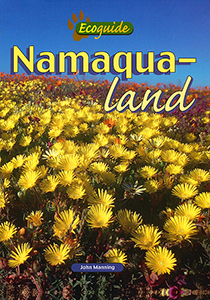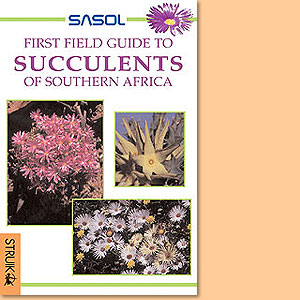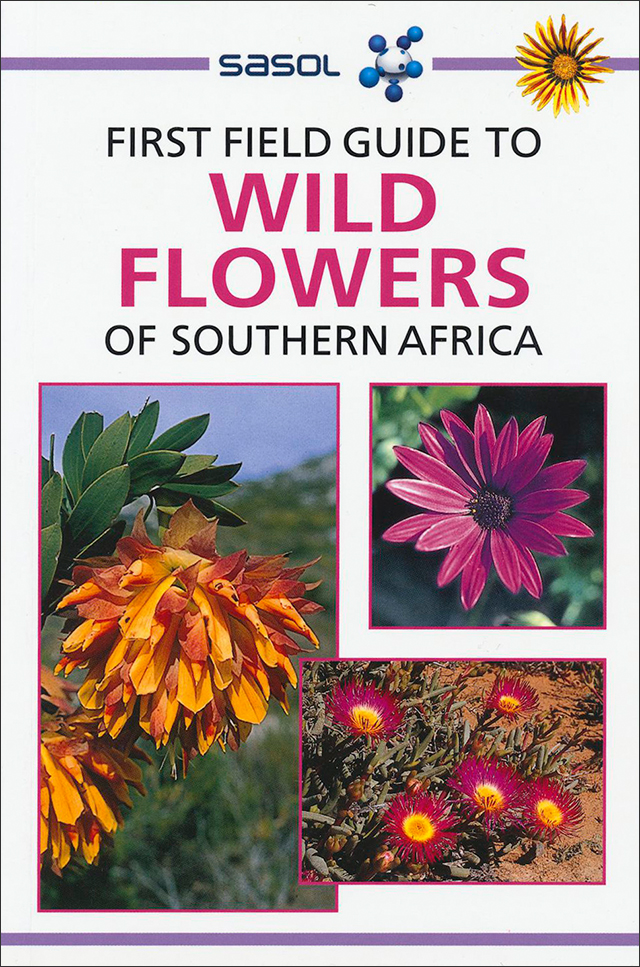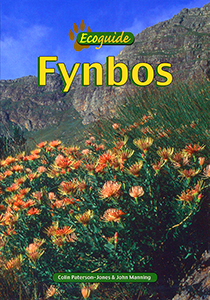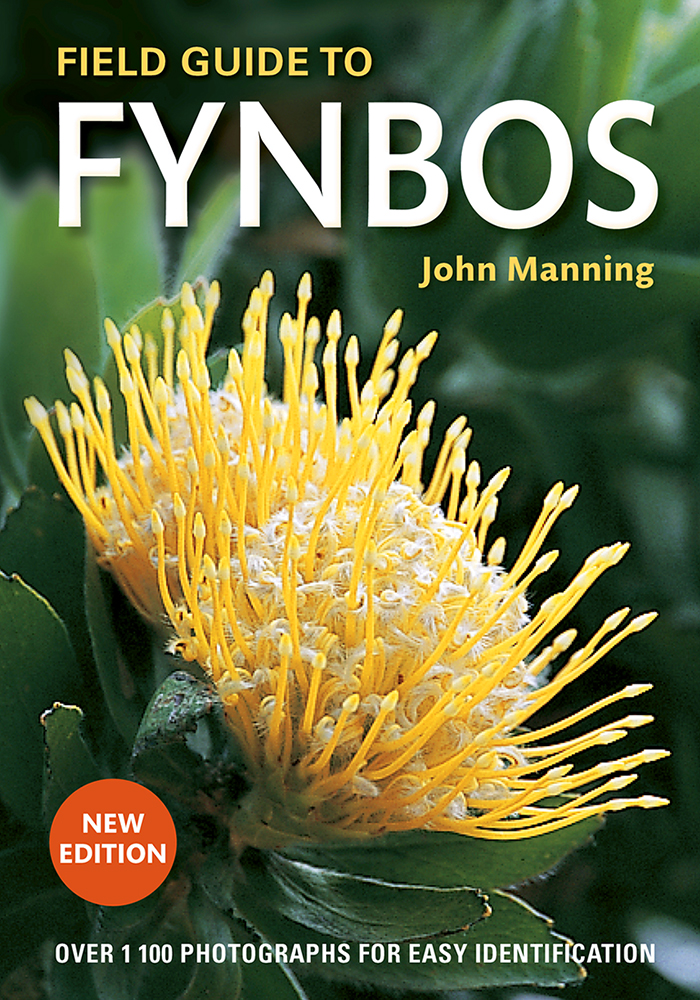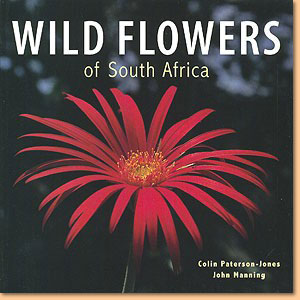Southern African Wild Flowers: Jewels of the Veld, by John Manning and Colin Paterson-Jones
Preface by John Manning and Colin Paterson-Jones: The idea for Southern African Wild Flowers: Jewels of the Veld came to us as we were driving through the quartz pebble patches of Namaqualand's Knersvlakte one May day some years ago.
Colin Paterson-Jones John Manning
We had been reviewing a recent trip to collect and photograph bulbous plants flowering in the summer-rainfall grasslands on the opposite side of the country, and were forcibly struck by the stark contrast between the two environments and in the very different plants that belonged to them. We also realized that we shared a concern for the increasing destruction of previously undisturbed natural veld in areas we both know well.
Relative to the size of its reading public, South Africa is exceptionally well served in the number and quality of popular and scientific books on its flowers. These include formal taxonomic works, guides to the Bowers of specific areas or to particular plant types, authoritative accounts of the vegetation of some regions, and a few just celebrating the beauty of the flowers in some areas. What we felt had not appeared was a book that related this subcontinent's extraordinary richness of wild flowers to the equally diverse landscapes they occupy. This book is an attempt to fill that gap. It is not a guide. It is certainly not comprehensive. Nor is it in any way taxonomically representative of the southern African flora. To a real extent, it no doubt reflects some bias in our personal floral interests. Readers who belong to one of the many sub-cultures of flower enthusiasts may be disappointed not to find their personal favourites featured or emphasized. What we have tried to do is showcase just a few of the beautiful, interesting or rare southern African flowers, their interactions with their physical environment and other living things, and some of the various natural scenic splendours of the subcontinent.
We hope the reader will come away delighted by some of the world's most exquisite visual treats, awed by the complexity of the web of living things of which plants form an essential part and, finally, conscious of the absolute, unarguable need for the conservation here of natural habitats undisturbed by humanity. Without these, future generations will not be able to share these delights. More importantly, the accelerating destruction of the natural environment threatens the integrity of complex natural systems that we do not properly understand. This has happened in recent years to such an extent that the future survival of humankind and most other complex living things is in question.
Introduction to Southern African Wild Flowers: Jewels of the Veld
Southern Africa is a botanical treasure trove, spilling over with floral jewels of all colours and shapes. The first inkling of the wonders that it holds reached the scientific establishment of Holland in 1597, in the form of a dried flower head of Protea nerafolia. Brown and unassuming as it was, it perplexed the Dutch botanists who, never having encountered a member of the Protea family before, were misled into regarding it as an exotic type of thistle.
Evidence of the true beauty of southern Africa's wild flowers was not long in coming, however, and in 1603 the red torch of the April Fool, Haemalithiis coccincus, blazed for the first time out-side South Africa, in the glasshouse of an elated Flemish plant fancier. These early collections were almost certainly made on the shores of False Bay, at the southern tip of the continent, where the ships plying the route to the Indies made a much-needed stop for fresh water. Unwittingly, they had also landed at the heart of one of the richest concentrations of plants in the world.
With the establishment of a permanent station at Cape Town in 1652, a veritable torrent of plants began to flow into the gardens and collections of Europe, stimulating a craze for the plants of the Cape that shows no sign of abating. The exploration of the interior followed and today there must be few people who have not admired or grown at least one of the thousands of species that comprise the incomparable bounty of southern Africa's wild Powers. Despite 400 years of collection and study, its wealth is still far from exhausted; and every year new species are described.
The native flora of southern Africa is one of the richest and most distinctive in the world. More than 22000 species of plants, ranging in size from diminutive succulents little larger than pins to towering forest giants 60 metres high or more, have been recorded south of the Zambezi, Okavango and Cunene Rivers. This diverse flora is contained in an area of 2,5 million square kilometres. The significance of these figures becomes evident when the southern African flora is com-pared with that of subtropical and tropical Africa to the north. An area of equivalent size in East Africa; for instance, contains a meagre 6000 plant species, while even the richest parts of tropical Africa produce little more than 10000 plant species in an area just slightly smaller.
Even more staggering is the fact that nearly half of southern Africa's plant species are concentrated in the extreme southwest, in the succulent and fine-leaved shrublands that make up the Cape Floral Region. Covering just 90000 square kilometres, less than 4 per cent of the subcontinent's land surface, this tiny strip at the southern tip of Africa is home to over 9000 plant species, most of which are endemic to it. But even if the floral riches of the Cape are excluded, the remaining portion of the subcontinent still boasts a flora of well over 12500 species. By either measure, the diversity of southern Africa's flora is unrivalled on the continent.
THE PLACE OF THIRST
Between the southern stretch of the central escarpment and the rocky ranges of the Cape Fold Mountains lies a wide and arid basin, the Great Karoo, or Place of Thirst. Rainfall is meagre, between 150 and 250 millimetres per year, arriving mainly in summer and autumn in the form of thunderstorms that come down from the north. Its relief is short-lived, and a scattering of stunted shrubs and scrawny grasses struggle for survival on the thin and stony soils.
In the south and the west, towards the dry northern slopes of the Swartberg and Witteberg ranges, the shrublands become more succulent as sparse late-winter showers become a component of the diminishing rainfall. The influence of these cold fronts is felt mostly along the heights of the escarpment itself. Relatively lush enosterveld shrublands thrive along the edge of the Roggeveld escarpment, and in spring the stream courses down its slopes are often choked with columns of Karoo Pokers, Kniphofia sarmentosa, bearing their dusky torches above grey, leafy swords.
The diminutive Crassula deltoidea, and the tiny Bulbine mesembryanthoides are dwarf succulents that shelter from the extreme heat of summer in the lee of small stones, storing moisture in their fleshy leaves. Gumbushes, Pteronia species, are common through the arid winter-rainfall regions and most are both succulent and deciduous as an adaptation to a climate that is arid and seasonal. The small leaves of the Grey Cumbush, Pteronia glauca, are covered with felt-like hairs that insulate the leaves and reduce the loss of valuable moisture.
Gumbushes often secrete a sticky resin from their leaves and flower bracts that makes them unpalatable to grazing animals. Some survive to a great age, their twisted, gnarled stems seemingly incapable of supporting life for this long. The drought-resistant daisy Dicoma picta has dispensed with its leaves almost entirely, and uses its stems for photosynthesis instead. It reduces the water loss from its stomata, or breathing pores, by keeping them in hair-fringed channels.
Few bulbs are able to survive in this region of low rainfall but Nerine marincowitzii is a startling exception. This rare and localized species only produces its exquisite, rounded heads of delicate, pink flowers in early winter if there have been good autumn showers. Flowering and fruiting is completed within a few weeks, after which the specially adapted fruiting heads break free from the bulb, scattering the seeds as they are bowled across the open landscape by the wind. This strategy for seed dispersal is well developed in many winter-rainfall amaryllids and is especially effective in this spacious, arid landscape that is subject to frequent winds.
Picture shown with this chapter:
1. The arid eastern slopes of the Witteberg Mountains
2. Wild Pink, Dianthus caespitosus(Carnation family)
3. Karoo Poker, Knifhofia sarmentosa Aloe family) on the Roggeveld escarpment
4. Dicoma picta (Daisy family)
5. Grey Gumbush, Pteronia glauca (Daisy family)
6. Crassula deltoidea (Stonecrop family)
7. Bulbine mesembryanthoides (Aloe family)
8. Nerine marincowitzii (Amaryllis family)
Content of Southern African Wild Flowers
LAND OF PLENTY
The Great River
The Eastern Highlands
The Low Country
Land of God
God's Window
Maputaland's Lakes and Forests
Land of Green Hills
The Emerald Archipelago
Barrier of Spears
The Wild Coast
The Grassy Frontier
A Botanical Mosaic
The Thorny World of Thicket
The Plains of Camdeboo
Fynbos Frontier
FYNBOS COUNTRY
High and Dry
A Succulent Desert
Mountains of the Sea
The Great Forest
The Basin of Diversity
Mountains of Mystery
The Killing Fields
Land of Limestone
Heart of the Cape Flora
The Fairest Cape
A Montane Refuge
West Coast Wonderland
Paradise Lost
The Western Mountains
Realm of the Cedar
A Valley of Flowers
On the Edge
THE THIRSTLANDS
Gateway to Namaqualand
The Bulb Capital
Bastion of Rarity
The Place of Thirst
The Glittering Plain
A Coast of Contrasts
Garden of the Gods
River of Diamonds
The Lost World
A Grassy Desert
The Great Plateau
Land of Thirst
Desert of Antiquity
The Last Oasis
This is an extract from the book: Southern African Wild Flowers: Jewels of the Veld, by John Manning and Colin Paterson-Jones.
Book title: Southern African Wild Flowers: Jewels of the Veld
Authors: John Manning; Colin Paterson-Jones
Struik Publishers
Cape Town, South Africa 2004
ISBN 1770070176
Hardcover, dust jacket, 27x30 cm, 176 pages, throughout colour photos
Manning, John und Paterson-Jones, Colin im Namibiana-Buchangebot
Southern African Wild Flowers: Jewels of the Veld
Celebrates the beauty of Southern African wild flowers that truely are to be said the jewels of the veld along the landscapes.
Kirstenbosch: A visitor's guide
A colourful and highly informative visitor's guide to South Africa's extraordinary park, Kirstenbosch.
The Cape Floral Kingdom
The Cape Floral Kingdom features the rich and unique world of wild flowers of South Africa.
The lycopods and ferns of the Drakensberg and Lesotho
The lycopods and ferns of the Drakensberg and Lesotho is the most comprehensive account of lycopod and fern species occurring in the Drakensberg and Lesotho region.
Photo Guide to the Wildflowers of South Africa
This excellent photo guide includes nearly 900 of the most common and conspicuous wildflowers that occur in South Africa and the neighbouring countries of Lesotho, Swaziland and Namibia.
Field Guide to Wild Flowers of South Africa
Manning's Field Guide to Wild Flowers describes more than 1100 of shrubs and herbs of South Africa.
South Africa's Floral Kingdom (Hoberman)
South Africa's Floral Kingdom is the collaboration of Gerald Hoberman and John Manning, an authority on the South African flora.
Ecoguide Namaqualand
This Ecoguide describes 200 wildflowers and their background on birds, insects, spiders, reptiles and mammals of Namaqualand.
First Field Guide to Succulents of Southern Africa
Information at a glance through superb photographs, maps and easy-to-read text
First Field Guide to Wild Flowers of Southern Africa
First Field Guide to Wild Flowers of Southern Africa is an invaluable resource for the beginner, providing information at a glance through superb photographs, maps and easy-to-read text.
Ecoguide Fynbos
This ecoguide introduces 400 wildflowers and birds, insects, spiders, reptiles and mammals in their environment in the Fynbos region of South Africa.
Field Guide to Fynbos
Field Guide to Fynbos features 1150 species of Fynbos, focusing on the most common and conspicuous wild flowers of South Africa.
Wild Flowers of South Africa
Offers a glimpse into South Africa’s rich floral heritage, enabling the reader to enjoy our most spectacular flowers

